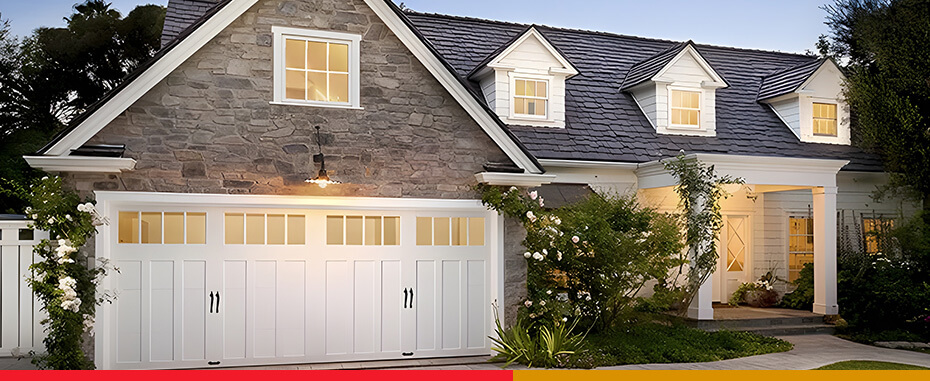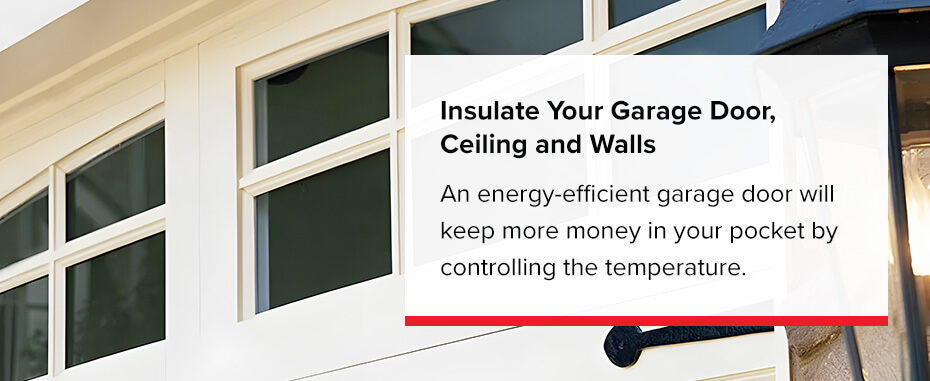
Your garage is a multifunctional space where you park your car or store household items, tools and equipment. The garage is a significant source of wasted energy in many homes, but that doesn’t have to be the case.
If you’re interested in opportunities to upgrade your garage and ways to improve energy efficiency in your home, we’ve compiled a few tips that might help. Read on for more.
Benefits of Saving Energy in Your Garage
Before we explore how to save energy, consider these advantages.
- Better temperature regulation: An insulated garage improves temperature regulation, ensuring it stays cool in the summer and warm in the winter. Any adjoining living space, like a room beside or above the garage, will benefit from the reduced impact of temperature fluctuations.
- Reduced energy bills: If you use your garage as a workshop, office, home gym or theater, you need it to stay comfortable year-round. By insulating your garage, you will depend on your HVAC system less, saving on energy bills.
- Soundproofing: Another benefit of garage insulation is that it helps muffle loud noises. You won’t disturb your neighbors by working with noisy equipment like power tools, and your insulation will also drown out any external sounds, giving you more peace.
Energy-Saving Tips
You can do a few things to influence how much energy you save in your garage. Here are some tips we hope will help.
Insulate Your Garage Door, Ceiling and Walls

The most efficient way to save energy is by insulating your garage door. An energy-efficient garage door will keep more money in your pocket by controlling the temperature in the garage and nearby rooms.
Each time you open the garage door, cold or hot air enters and changes the temperature inside. You’ll likely feel spots that will make the environment chilly or humid. If you use the garage as an extended living space, you may rely more on your air conditioner, driving up your electricity bill.
Anything valuable stored in the garage risks mold or mildew damage, which is another reason for insulating the area. Vents in your ceiling will encourage airflow, and a solid garage floor will prevent air from seeping through holes and bringing in a draft. Maintaining your floor will keep it in peak condition for longer.
Take these additional measures to secure your garage and save energy.
Install Energy-Efficient Windows
Garage door windows are another source of heat and cold retention and loss. Having energy-efficient windows can help you save on energy bills by keeping out or retaining heat when needed. If you don’t have these, add blinds or curtains you can close to shield from the sun when it’s hot and let in more light when it’s cooler.
Switch off Unnecessary Appliances
If you use your garage to store appliances like a fridge, washing machine, freezer and other big electronics, switch them off when they’re not in use. Some appliances consume more energy, so we suggest unplugging these “electricity vampires” to decrease your utility bills. If your water heater is in the garage, consider covering it with a thermal blanket to keep it warmer for longer, meaning you’ll use less electricity to keep it on.
Declutter Your Garage
It might seem irrelevant to your energy-efficiency goals, but cleaning out your garage can preserve it in the long run. When your garage is full, keeping track of your storage is more challenging, and some things might attract unwelcome guests like mice and rats. With clutter, there’s an increased chance these pests will gnaw through wires you use to run appliances in your home.
A clean garage helps you identify areas where you could have leaks and other issues you might not notice due to excessive clutter. To keep everything tidy and organized, use storage racks and boxes, and cover any exposed items with plastic to prevent water and moisture damage.
Weatherstrip the Door and Windows
Tiny holes and crevices in your garage wall and around the door and windows can make your garage drafty. This issue is undesirable, especially in winter, if you use your garage as a living area. Even if you only use the space for storage, constant temperature fluctuations could damage your precious belongings.
One way to secure your garage and save energy is by weatherstripping the door and any windows. Since some holes and cracks are too small to see, carefully inspect the areas around your garage door and windows by skimming the surface with your hands and feeling for any air that could be coming through.
It’s easy to secure your garage with weatherstripping. Caulk is the best material to use, though there are alternatives like vinyl and metal. As an extra measure, check the interior door for air leaks and seal it to prevent air from seeping through.
Other quick DIY changes like insulating outlets, exchanging manual switches for automatic ones and replacing conventional lightbulbs with LED lights contribute to creating an energy-saving space you can enjoy.
Install an Insulated Garage Door With AE Door & Window
Saving energy is always worthwhile because every small step you take benefits the environment and your wallet. While the garage might not be first on your list of efficient home improvements, we’ve explored a few ways you can facilitate this by upgrading parts of your garage — specifically, insulating it to regulate the room temperature.
AE Door & Window is your solution to your garage door insulation problems. We have years of experience in garage door installation and replacement using only the best-quality doors. If you’re considering upgrading your garage door, call us or request service in your area, and we’ll discuss your door options.

